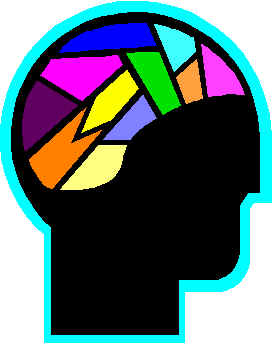
CURRENT THEORIES OF SECOND LANGUAGE ACQUISITION
(APLN 520)
Dr. Susana M. Sotillo
Fall 2002

This course provides an in-depth analysis of the processes of child and adult second language acquisition (SLA) and how it differs from first language acquisition, and the implications of these theories for the teaching and learning of second languages. The application of sociolinguistics, psycholinguistics and computer-mediated communication to language teaching will also be covered.
Location and Time: Wednesdays, 5:30 to 6:25 p.m. Dickson Hall 280 and 6:30 to 8:00 p.m. in DI122
Office Hours: Cyberspace: Anytime at Sotillos@mail.montclair.edu and Tuesdays from 2:30 to 4:30 p.m.
Course Requirements: Students are asked to keep up with the reading assignments and participate in classroom and web-based discussion groups. In addition, each student will be asked to lead a discussion session focusing on a specific topic. Students are responsible for summarizing and analyzing research articles assigned. Your grade will be calculated as follows: attendance and classroom/cyberspace participation as group leader, 30%; completion of all reading assignments, classroom projects, and web-based research, 30%; and performance on two in-class exams, 40%.
Join the Discussion Forum and exchange information with your classmates and colleagues.
This syllabus is a guide subject to modifications. Remember that web-based documents are always under construction.
Required Text: Gass, S.M. , & Selinker, L. (2001). Second Language Acquisition (2nd Edition). Mahwah, NJ: Lawrence Erlbaum Associates, Publishers.
Selected Readings: Twenty-two articles will be placed on reserve. We will use the following journals: Applied Linguistics, CALICO, Language Learning, Studies in Second Language Acquisition, Language Learning and Technology, TESOL Quarterly, The Journal of Asynchronous Learning Networks, and The Modern Language Journal.
Corpus Linguistics and the use of Concordances in language instruction: The Hong Kong Concordance; MICASE; Collins CoBuild; Great Books.
Week of |
Topic/Assignments |
Book/Articles |
September 4, 2002 |
Introduction to Current Theories. Overview of major approaches to SLA. SLA and interactive technology. | Read chapters 1 &2: the study of second language acquisition, definitions, the nature of language. Do exercise 4 (p.14) in class. Assignment #1 |
September 11 |
Let's look at interlanguage data: data analysis, theoretical assumptions, data collection, data elicitation, replication. | Discuss the nature of interlanguage. Examine language learner output. Chapter 3: The role of the native language. Do exercises 3 and 4. |
September 18 |
Child Language Acquisition: First and Second. Assignment #2: Interview a child second language learner and tape record him/her for 10 minutes. Transcribe the interview and analyze the evolving L2 grammar and pronunciation. Due October 9. | Chapter 4: Theories of learning, child second language acquisition, and overview of child second language morpheme order studies. Do activity No.1, (p. 108) with child second language learner. |
September 25 |
Recent Perspectives on the Role of Previously Known Languages (morpheme studies revisited; avoidance; differential learning rates; interlanguage transfer). | Chapter 5 and read articles by Bardovi-Harlig and Wei. Please refer to the schedule of student presentations. Do exercise #1. |
October 2 |
Second Language Acquisition and Linguistics. Visit the Internet TESL Journal. |
Chapter 6: Language universals; typological universals; tense and aspect; phonology. Read O'Grady and Schwartz. Do activities 1, 3 and 4. |
October 9 |
Universal Grammar: Principles and Parameters. Cognitive dimensions of language acquisition. See Pinker. |
Chapter 7 and articles by
Lyster; Mackey, Gass & McDonough. Do activities 1 and 2. Visit DANA's brain site. Learn how the brain functions: brain anatomy and Probing the brain. |
October 16 |
Interlanguage Processes. Cognitive dimensions of language transfer. | Chapter 8: The Competition Model; the Monitor Model; Alternative Modes of Knowledge Representation; Connectionism. Read Williams; Collentine. |
October 23 |
No Classes. University Day. |
Review SLA concepts and theories. Read summaries and analyses of articles assigned to students. Read Hulstijn; Royce. |
October 30 |
Exam #1: Overview of major concepts and theories of SLA (Time: 80 minutes). | Exam will cover Chapters one through eight and articles assigned. Research on CMC. |
November 6 |
Interlanguage in Context | Chapter 9: Systematic variation; communication strategies; interlanguage pragmatics. Complete activities 2 and 3. Read Flege & Liu; Ortega. |
November 13 |
Input, Interaction, and Output | Read Chapter 10 and take a look at my dissertation. Complete activity 2 with a nonnative speaker of English. Read articles by Izumi et al.; Call & Sotillo. |
November 20 |
Instructed Second Language Learning |
Chapter 11: Classroom language; input processing;
teachability/learnability. Complete activities 1 and 2. Read Paribakht and |
|
November 28 -- 31 Thanksgiving Holiday (no
classes). |
||
December 4 |
Nonlanguage Influences Read The Seekers Series |
Chapter 12: Social distance; age differences; aptitude; motivation; personality factors; field dependence/field independence (GEF); learning strategies. Discuss activities 1 and 2. Read articles by Major et al.; Biber et al. Technology and Language Learning/SLA. |
December 11 |
Overview of Second Language Acquisition | Read articles by Carrell & Wise; Toyoda & Harrison. Chapter 14: An integrated view of SLA. Complete activities 1, 3, and 4. |
December 16-20 |
Final Examinations for Fall 2002 Exam #2: Review topics covered in class and articles assigned. Technology Survey. | General questions are based on readings assigned and classroom/Internet discussions. Fill out Student Evaluation Form. |